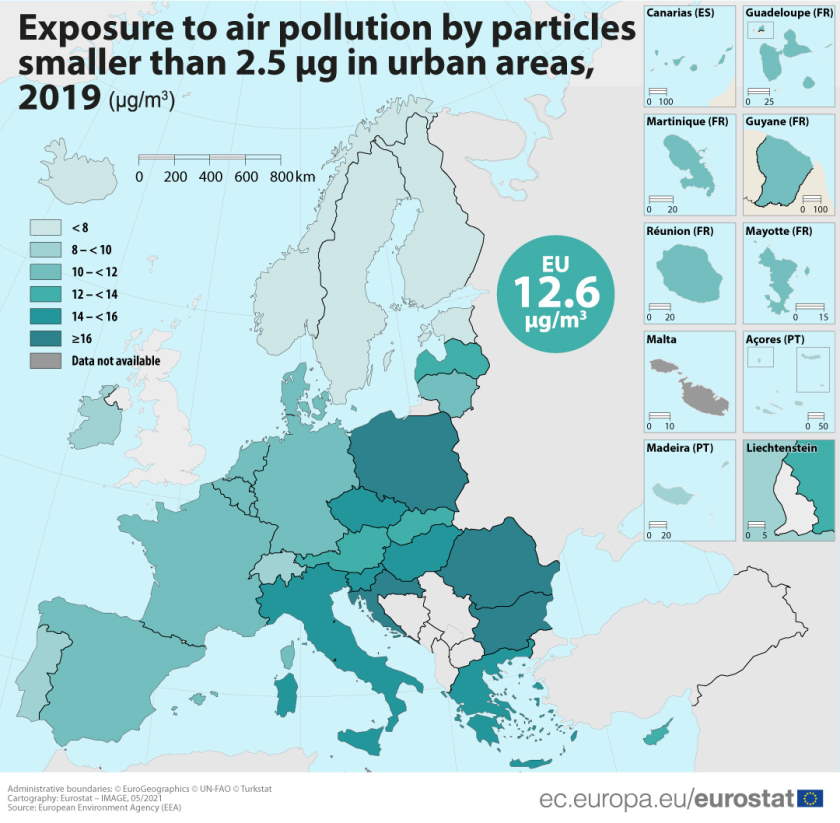
Photo: Eurostat
Bulgaria, Poland, Romania, and Croatia have the highest values of particulate matter 2.5 (PM2.5) in the European Union, according to Eurostat.
Among the EU member states, the annual mean concentration of fine particles (PM2.5) is highest in urban areas of Bulgaria (19.6 μg/m3) and Poland (19.3 μg/m3), followed by Romania (16.4 μg/m3) and Croatia (16 μg/m3).
The data is for 2019, and the average value for the EU is 12.6 μg/m3.
In contrast, the concentration is lowest in urban areas of Estonia (4.8 μg/m3), Finland (5.1 μg/m3) and Sweden (5.8 μg/m3).
The annual mean of PM2.5 air pollution in 2019 continued to be above the level recommended by the WHO – 10 μg/m3
While this type of air pollution has been for a number of years below the limit set from 2015 onwards (25 μg/m3 annual mean), substantial air pollution hotspots remain. Moreover, despite the gradual decrease in recent years, the levels of air pollution in 2019 still continue to be above the level recommended by the WHO (10 μg/m3 annual mean), Eurostat said.

Pollutants such as fine particulate matter suspended in the air reduce people’s life expectancy and perception of well-being, while they can also lead to or aggravate many chronic and acute respiratory and cardiovascular diseases.
Fine particles PM10, those with a diameter of under 10 micrometres, can be carried deep into the lungs, where they can cause inflammation and exacerbate the condition of people suffering from heart and lung diseases. Meanwhile, even smaller fine particles PM2.5 (with a diameter below 2.5 micrometres) can impact health even more seriously as they can be drawn further into the lungs, according to Eurostat.


















Be the first one to comment on this article.